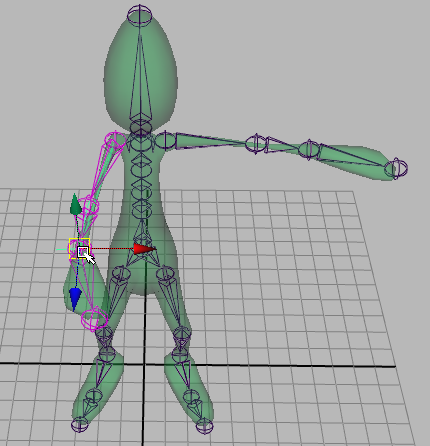With inverse kinematics (IK), you move an IK handle to pose an entire joint chain. An IK handle is an object you can select and move that affects the joints it is assigned to. See IK handles overview. A joint chain that has an IK handle is called an IK chain. When you pose and animate a joint chain with an IK handle, the IK solver automatically rotates all the joints in the IK chain. The IK solver is what Maya uses to calculate the rotations of all the joints in the IK chain when you position the IK handle. See IK solvers.

Inverse kinematics is more intuitive for goal-directed motion than forward kinematics because you can focus on the goal you want a joint chain to reach without worrying about how each joint in the chain should rotate.
Important Notes
- You cannot add to or remove joints from a skeleton if it is bound (skinned) to a model. If you do so, you will have to redo the IK handles or the skinning.
- If you want to pose your joint chains using IK handles, you should avoid creating joint chains that are drawn in straight lines. Rotating some of the joints in your joint chains slightly at various appropriate angles before inserting an IK handle makes it easier for you to pose the chains with IK.